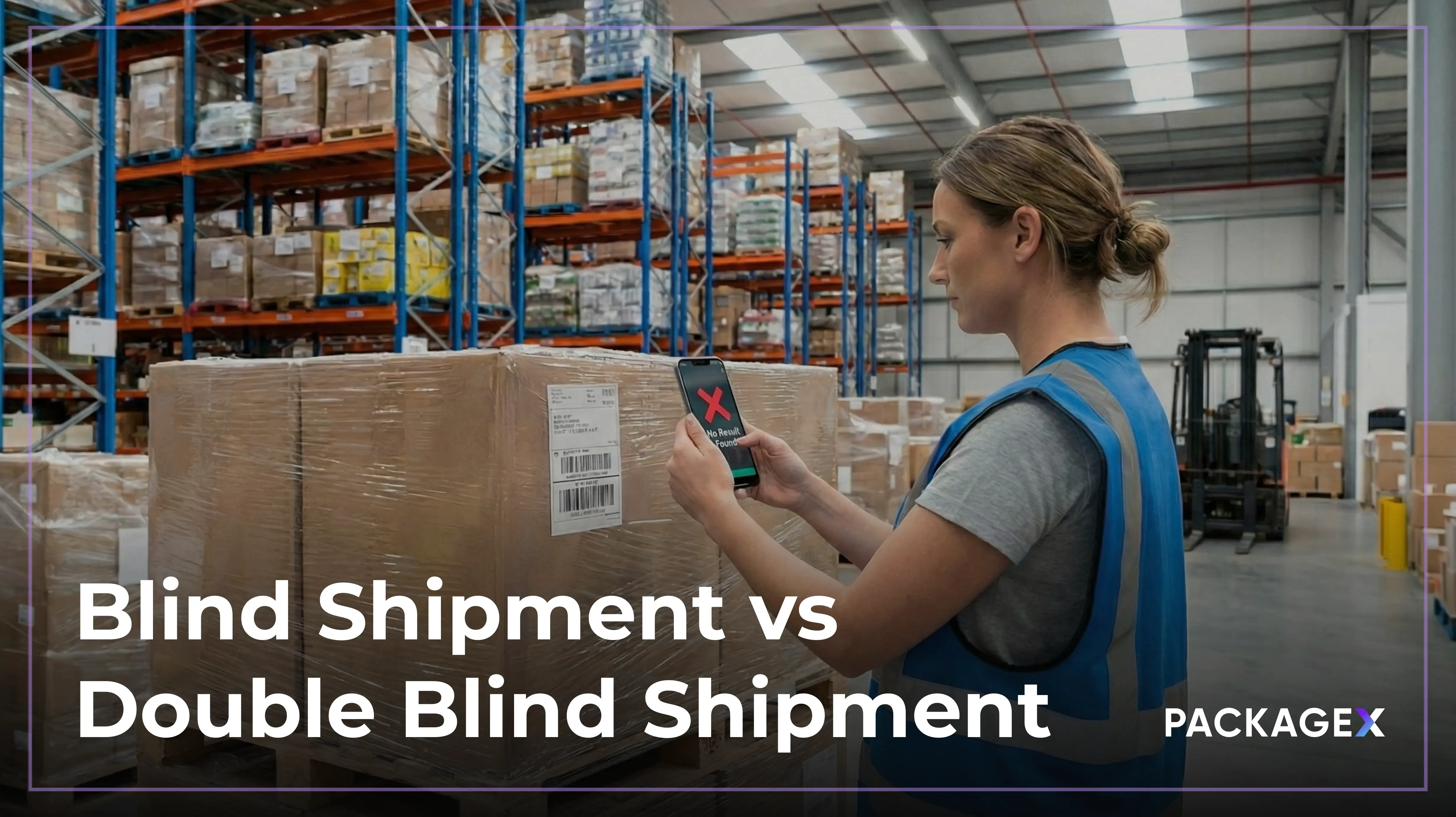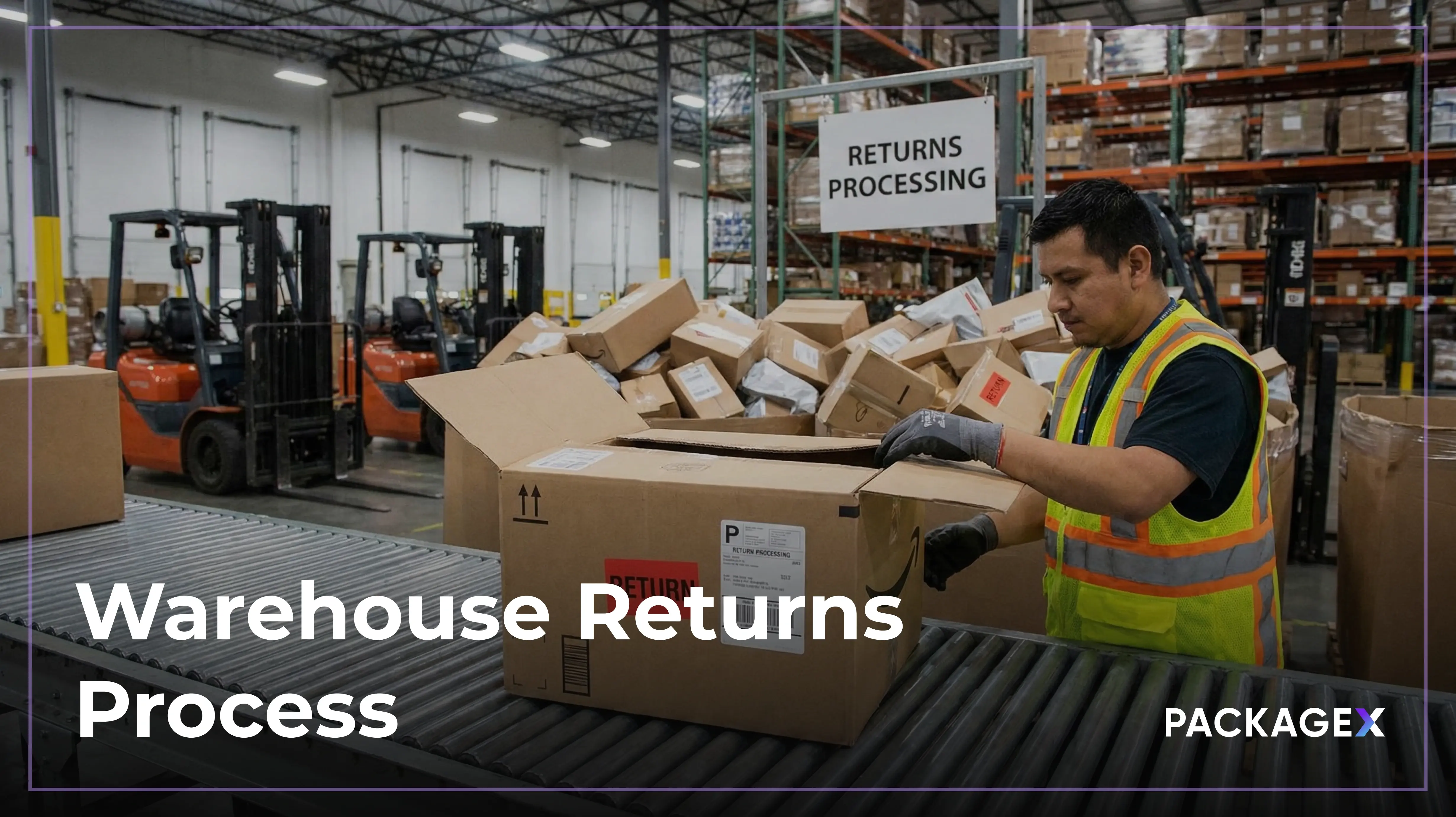Online retail is a competitive landscape, so exceptional eCommerce fulfillment is absolutely essential. You can have the best products and an attractive website, but without smooth logistics, turning clicks into cash becomes a challenge. Customers today expect their orders to be packaged and shipped quickly, so you have to make their convenience a top priority. This is where smart warehousing steps in. Smart warehousing is transforming traditional logistics with advanced technologies like robotics, IoT, and real-time inventory management. In this article, we’ll see how smart warehousing can enhance your eCommerce fulfillment process and support your business growth. Embracing these innovative practices is essential for meeting customer expectations and driving your success.
What Is eCommerce Fulfillment?
eCommerce fulfillment is the segment of the supply chain that involves getting orders to customers who shop online. This includes a range of tasks, such as receiving inventory, storing and packing products, shipping orders on time, and managing customer service and returns. When fulfillment is efficient and reliable, it builds customer trust and brand loyalty. Remember that these are essential elements for your online business. An eCommerce fulfillment provider typically operates centers in strategic locations to store inventory close to cities and transport hubs, allowing them to process orders for multiple online stores efficiently and reduce delivery times.
Why Is Fulfillment Important in eCommerce?
An efficient order fulfillment process is vital for the success of e-commerce businesses because it leads to three very important aspects of your business: customer satisfaction, shorter processing times, and minimum errors. If your fulfillment is streamlined, you improve operational efficiency, which can ultimately lead to increased revenue and profitability.
What Is the eCommerce Order Fulfillment Process?
The eCommerce fulfillment process is comprised of the following stages that work together to ensure smooth operations:
Receiving
The fulfillment process begins with receiving, where products are unloaded at the eCommerce fulfillment center. Providing an advance shipping notice helps streamline this step and identify any issues right away.
Warehousing
Next in the eCommerce fulfillment process is warehousing, which involves organizing and storing products efficiently. This means assigning each item a specific location for quick access when orders come in.
Picking and Packing
Once an order is received, picking and packing begin. Staff use pick lists to gather items, package them securely, and prepare them for shipping.
Shipping
The shipping step occurs when orders are handed off to carriers for delivery, ideally from strategically located eCommerce fulfillment warehouses, to ensure fast eCommerce fulfillment shipping.
Returns Processing
Finally, returns processing is crucial, as most online shoppers expect easy returns. A good eCommerce fulfillment 3PL can manage this easily by inspecting returned items and restocking sellable products.
What Are Some Common E-commerce Fulfillment Options?
When planning a fulfillment strategy, you need to know which eCommerce fulfillment model you can utilize:
- In-house Fulfillment: Small businesses usually pack orders themselves so they can control quality and add personal touches, but this can become challenging as they grow.
- Outsourced Order Fulfillment: Partnering with a third-party logistics (3PL) provider (eCommerce fulfillment company) allows businesses to focus on growth while logistics experts handle fulfillment.
- Amazon FBA: Fulfillment by Amazon uses Amazon's extensive logistics network and offers Prime shipping, but this eCommerce fulfillment platform may limit space and support for smaller sellers.
- Hybrid Fulfillment: This approach combines multiple fulfillment methods, like Amazon FBA and in-house shipping. So, this is the most flexible option and handles warehouse space issues.
- Dropshipping: Merchants sell products without holding inventory, relaying orders directly to manufacturers who ship to customers. This reduces upfront investment but limits control over fulfillment.
eCommerce Fulfillment Challenges That Businesses Face
Regardless of the eCommerce fulfillment services you use, there are always challenges that slow down your system. Some of these are:
- Lack of Fulfillment Expertise: Without the necessary expertise in logistics, it is overwhelming to manage operations efficiently.
- Volume Fluctuations: Not being prepared for fluctuating order volumes, especially during peak seasons, can strain resources and lead to delayed shipments.
- Distraction from Strategic Growth: Handling eCommerce fulfillment tasks can distract business owners from core growth activities like marketing and product development.
- Outdated Technology: Relying on outdated systems can hinder efficiency and data-driven decision-making, making your business vulnerable to operational inefficiencies and missed opportunities.
What Is a Smart Warehouse?
Considering your business’s vulnerability due to weak fulfillment operations, you should consider opting for a smart warehouse. A smart warehouse is a spacious facility that stores raw materials and finished products. It uses machines and computers to automate tasks that were traditionally done by humans. This technology enhances efficiency, streamlines warehouse operations, and lowers logistics costs.
Benefits of Smart Warehousing for eCommerce Fulfillment
Let’s look at how a smart warehouse system can improve fulfillment for eCommerce:
- Fewer Human Errors: Smart warehouses minimize mistakes by automating picking, packing, and shipping, leading to better order accuracy and a smoother customer experience.
- Improved Inventory Management: Advanced tracking systems provide real-time visibility of inventory levels, helping businesses manage stock more effectively across multiple locations.
- Faster Order Fulfillment: eCommerce fulfillment software accelerates the fulfillment process, so eCommerce stores can make quick deliveries without sacrificing quality.
- Fewer Returns: With accurate picking and secure packing, smart warehousing reduces the likelihood of shipping errors, which in turn lowers return rates and saves money.
- Lower Fulfillment Costs: Integrating smart warehousing with a 3PL partner can significantly cut costs by streamlining processes and optimizing resource use. More time for growth-focused initiatives!
Smart Warehouse Solutions to Optimize eCommerce Fulfillment
Curious to know more about smart warehouse technology? Here are some of the ways you can upgrade your eCommerce warehouse.
Warehouse Robots and Automated Guided Vehicles (AGVs)
Warehouse robotics improve order accuracy and boost productivity while simultaneously reducing labor costs. Automating the order-picking process makes it two to three times faster than manual methods, so your team can focus on optimizing operations rather than being bogged down by repetitive tasks. Drones can increase inventory visibility by autonomously conducting inventory audits and cycle counting, giving you real-time data on stock levels.
AGVs accelerate internal processes in the eCommerce fulfillment warehouse, from inventory receiving to storage and shipping. These autonomous vehicles follow predefined paths, optimizing material handling and accelerating tasks such as pallet loading and unloading.
Artificial Intelligence (AI)
AI is an eCommerce fulfillment solution that is transforming operations by analyzing and learning from supply chain data to anticipate potential crises. It can optimize storage by alerting you when space is running low, which enables you to do proactive planning.
Warehouse Management System (WMS)
A strong warehouse management system is one of the best eCommerce fulfillment solutions as it centralizes logistics operations, ensuring that goods are stored, picked, packed, and shipped accurately. WMS provides visibility into inventory and order activity, decreasing fulfillment times and enhancing order accuracy through improved inventory tracking and eCommerce fulfillment automation. Setting automated reorder points is essential to maintaining optimal inventory levels. By analyzing factors like inventory turnover rates and delivery timelines, it can adapt reorder points to fluctuating demand.
Internet of Things (IoT)
The Internet of Things (IoT) connects various devices within the warehouse, facilitating communication and data sharing. By synchronizing technologies like WMS, sensors, and RFID tags, you can collect operational data that provides deep insights into warehouse performance. This connectivity helps in tasks such as accurately locating items, monitoring environmental conditions, and predicting equipment maintenance needs.
In addition to integrating technology in your warehouses, it is important to follow eCommerce fulfillment best practices, such as regularly optimizing the warehouse layout.
How PackageX Helps With eCommerce Fulfillment Automation
PackageX is providing eCommerce fulfillment solutions by turning traditional warehouses into smart, efficient hubs. At the heart of this shift is their advanced AI scanning technology, which digitizes data from logistics documents with impressive accuracy and speed. This 4-in-1 AI scanning tool covers QR, text, barcode, and object recognition, making inbound workflows smoother and reducing errors along the way.
PackageX’s suite of flexible apps and APIs can help you develop a solid eCommerce fulfillment strategy. These apps and APIs work easily with your existing warehouse management systems, improving visibility and automation throughout the supply chain. This integration means real-time inventory updates, faster order processing, and smoother picking and packing operations.
Here’s how PackageX tackles some of the biggest challenges in eCommerce fulfillment:
- Increases throughput and improves workforce efficiency
- Lowers fulfillment and shipping costs with multi-carrier rate optimization
- Enhances visibility across systems like ERP and WMS
- Simplifies returns with automatic scanning for RMAs (Return Merchandise Authorization) and inventory updates
- Boosts customer satisfaction with quicker order processing and accurate tracking
With user-friendly mobile apps, PackageX smooths receiving and fulfillment workflows, allowing warehouses to adapt quickly to shifting eCommerce demands.
{{returns-webinar}]
FAQs
What is WMS in eCommerce?
An eCommerce WMS helps manage the entire flow of goods and inventory within a warehouse. It optimizes how items are stored and retrieved and gives you real-time visibility into stock levels and locations. This way, you always know what’s in stock and where it’s located, and you can easily keep track of every movement within the warehouse.
What does ‘in fulfillment’ mean?
At this stage, the fulfillment associate actively picks items from the shelves and prepares them for shipment. They’re focused on packing everything up to complete the order, so typically, any changes to the order won’t be possible once it reaches this point.
What is an eCommerce fulfillment center?
A third-party fulfillment provider takes care of packing, shipping, and delivering products your customers have ordered. In this process, all the logistics—getting an order from the eCommerce fulfillment center to your customer’s doorstep—are handled for you. This means you don’t have to worry about packaging, labeling, or shipping each order yourself.




